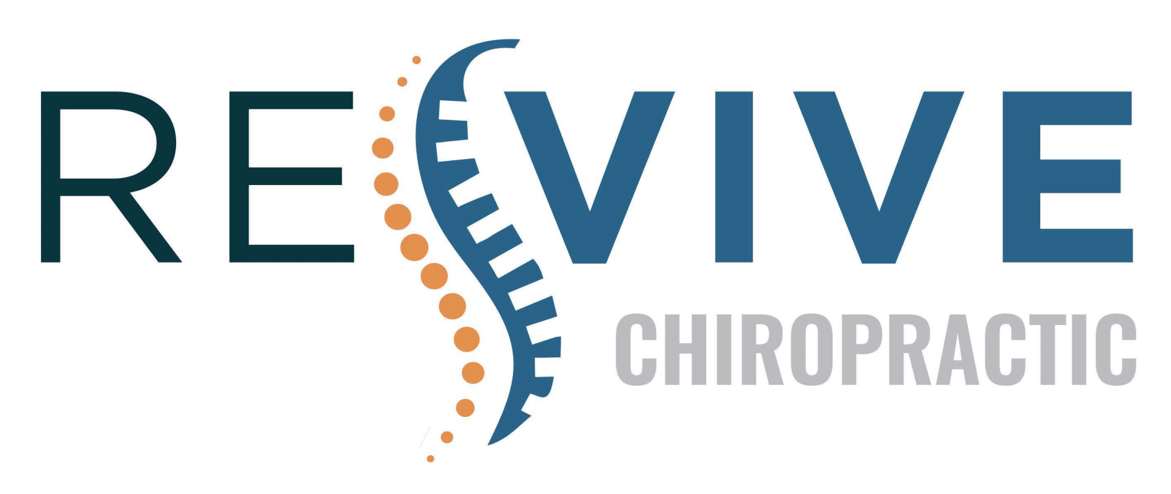If you're struggling with tension headaches, you might find relief through various chiropractic methods that can address the root causes. Chiropractors often use adjustments to realign your spine, which can greatly reduce nerve irritation. Techniques like soft tissue therapy and posture correction further contribute to lowering stress in your neck and shoulders. But there's more to it—like nutritional guidance and stress management techniques—that play an essential role in your overall well-being. Curious about the specific strategies chiropractors recommend? Let's explore the top seven ways they can help you find relief.
Chiropractic Adjustments
When it comes to managing tension headaches, chiropractic adjustments can play an essential role in alleviating discomfort. You mightn't realize how much your spine's alignment affects your overall well-being, including headache frequency and intensity. By visiting a chiropractor, you're taking a proactive step towards addressing the root cause of your tension headaches.
During your appointment, the chiropractor will conduct a thorough assessment of your spine and neck. They'll look for misalignments or restrictions that could be contributing to your headaches. Once they've identified the problem areas, they'll perform specific adjustments to realign your spine, allowing your body to function at its best.
These adjustments help reduce nerve irritation and improve blood flow, which can greatly decrease headache symptoms. You may notice immediate relief after your first session, or it might take a few visits to feel the full benefits. Either way, regular adjustments can help you manage your tension headaches more effectively.
In addition to providing relief, chiropractic care also focuses on prevention. By maintaining proper spinal alignment, you can minimize the chances of future headaches.
Your chiropractor may also offer advice on posture, ergonomics, and lifestyle changes that can further support your health.
Soft Tissue Therapy
How can soft tissue therapy enhance your relief from tension headaches? This therapy focuses on releasing tension in the muscles and connective tissues surrounding your neck, shoulders, and upper back. By targeting these areas, you can experience a significant reduction in muscle tightness, which often contributes to headache pain.
During a session, your chiropractor uses various techniques, such as deep tissue massage, myofascial release, and trigger point therapy. These methods help to break down knots and improve blood flow, allowing your body to heal itself more effectively. You might notice that as the tension in your muscles decreases, so does the frequency and intensity of your headaches.
Soft tissue therapy also promotes relaxation, which is essential for headache relief. When your body relaxes, stress levels drop, and tension headaches often diminish. You'll likely feel an immediate sense of relief during and after your sessions, as the therapist works to alleviate the tightness and discomfort in your muscles.
Incorporating soft tissue therapy into your treatment plan can be a game changer for managing tension headaches. It not only addresses the immediate symptoms but also helps prevent future headaches by ensuring your muscles stay loose and flexible.
If you're struggling with recurring tension headaches, consider discussing soft tissue therapy with your chiropractor. They can tailor a plan that specifically targets your needs, putting you on the path to feeling better and enjoying life without the burden of headaches.
Posture Correction
Good posture plays an essential role in preventing and alleviating tension headaches. When you slouch or hunch over, it places undue stress on your neck and shoulders, leading to muscle tension that can trigger headaches. By correcting your posture, you can greatly reduce this tension and lower the likelihood of experiencing headaches.
Chiropractors often assess your posture during your visits. They'll look for misalignments in your spine and any imbalances in your musculature. Once they identify problem areas, they can provide specific adjustments that help realign your spine, promoting better posture.
You might notice that even small changes, like sitting up straighter or holding your head higher, can make a big difference in how you feel.
In addition to adjustments, chiropractors may offer guidance on ergonomic setups at work or home. For example, they might suggest adjusting your chair height, computer screen position, or even how you hold your phone.
These simple changes can go a long way in maintaining good posture throughout your daily activities.
Stretching and Strengthening Exercises
Many people find that incorporating stretching and strengthening exercises into their routine can greatly help manage tension headaches. These exercises target the muscles in your neck, shoulders, and upper back, which often contribute to headache tension. By regularly stretching and strengthening these areas, you can enhance flexibility, improve posture, and reduce muscle tightness.
Start with gentle neck stretches. For instance, slowly tilt your head to one side, bringing your ear toward your shoulder. Hold for about 15-30 seconds and switch sides. This simple stretch can relieve tension in the neck muscles.
Next, try shoulder rolls. Lift your shoulders toward your ears, then roll them back and down. Repeat this movement several times to release built-up tension.
Incorporating strengthening exercises is just as important. Simple resistance training, like using a resistance band, can help strengthen your upper back and shoulder muscles. For example, perform rows by pulling the band towards you while keeping your elbows close to your body. This strengthens the muscles that support your head and neck, helping to alleviate the strain that leads to headaches.
Don't forget about your core! A strong core supports your spine and can reduce overall tension. Planks and bridges are great exercises to incorporate into your routine.
Aim to practice these stretches and strengthening exercises regularly. By doing so, you'll not only manage your tension headaches but also promote overall well-being.
Lifestyle and Ergonomic Advice
What steps can you take to create a more headache-friendly environment? Start by evaluating your workspace. If you spend hours at a desk, make certain your chair and desk are ergonomically designed. Your chair should support your lower back, and your computer screen should be at eye level to avoid straining your neck. Keep your feet flat on the floor and use a footrest if necessary.
Next, pay attention to your posture. When sitting, keep your shoulders relaxed and avoid slouching. If you've got a tendency to hunch over your phone, consider using a hands-free device to keep your neck aligned. Regularly remind yourself to take breaks; a few minutes each hour to stretch and walk around can make a substantial difference.
Lighting plays an essential role too. Bright, harsh lights can trigger tension headaches. Opt for softer, natural lighting when possible. If you're working late, use a desk lamp that provides adequate light without glare.
Don't forget about your hydration and nutrition. Dehydration can lead to headaches, so keep water nearby and sip throughout the day. Eating balanced meals at regular intervals can also help prevent those pesky tension headaches from creeping in.
Lastly, consider your sleep environment. Make sure your bedroom is dark, cool, and free of distractions. A comfortable mattress and pillow can greatly impact your quality of sleep, which in turn affects your overall wellbeing.
Stress Management Techniques
When you're feeling overwhelmed, stress management techniques can make a big difference.
Incorporating breathing exercises, mindfulness meditation, and progressive muscle relaxation into your routine can help you regain control.
These practices not only ease tension but also promote overall well-being.
Breathing Exercises Benefits
Incorporating breathing exercises into your daily routine can greatly enhance your ability to manage stress and tension headaches. By focusing on your breath, you create a calming effect that helps reduce anxiety and tension in your body. This simple practice allows you to shift your attention away from stressors, promoting relaxation.
When you take deep, intentional breaths, you're not only supplying your brain with more oxygen but also stimulating the parasympathetic nervous system. This response can lower your heart rate and blood pressure, further easing tension. You might find that even a few minutes of focused breathing can clear your mind and release tightness in your neck and shoulders, common culprits behind headaches.
Moreover, practicing breathing exercises regularly can help you become more aware of your body's signals, allowing you to address stress before it escalates.
Whether it's through diaphragmatic breathing, box breathing, or simply counting your breaths, you'll gain tools to combat tension headaches effectively.
Mindfulness Meditation Practices
Amid the chaos of daily life, mindfulness meditation practices offer a powerful way to manage stress and alleviate tension headaches. By focusing your attention on the present moment, you can create a mental space that reduces anxiety and promotes relaxation.
Start by finding a quiet spot where you won't be disturbed. Sit comfortably, close your eyes, and take a few deep breaths.
As you breathe, concentrate on the sensations of your breath entering and leaving your body. If your mind starts to wander, gently guide it back to your breath without judgment. This practice helps you become more aware of your thoughts and feelings, allowing you to respond to stressors more calmly.
Incorporating mindfulness meditation into your daily routine can greatly lower the frequency and intensity of tension headaches. Even just a few minutes each day can lead to noticeable improvements.
You might consider joining a guided meditation class or using an app to enhance your practice. Ultimately, the more you practice mindfulness, the more equipped you'll be to manage stress and tension, leading to a greater sense of overall well-being.
Progressive Muscle Relaxation Techniques
Mindfulness meditation can lay the groundwork for exploring other effective stress management techniques, such as progressive muscle relaxation (PMR).
PMR helps you become aware of physical tension in your body and teaches you how to release it. By systematically tensing and relaxing different muscle groups, you can considerably reduce stress and alleviate tension headaches.
Here's how to practice PMR effectively:
- Find a Comfortable Position: Sit or lie down in a quiet space where you won't be disturbed.
- Focus on Your Breathing: Take deep, slow breaths to center yourself and prepare for relaxation.
- Tense Your Muscles: Start with your feet, tense the muscles for about five seconds, then release. Move up through your calves, thighs, abdomen, arms, and face, repeating the tensing and relaxing process.
- Notice the Difference: Pay attention to how your body feels as you release tension. This awareness enhances relaxation and can help you identify stress patterns over time.
Incorporating PMR into your routine can be a powerful tool for managing headaches and promoting overall well-being.
Nutritional Guidance
When it comes to managing tension headaches, identifying dietary triggers is essential for you.
Staying properly hydrated also plays a vital role in preventing headaches.
Let's explore how these nutritional factors can help you find relief.
Dietary Triggers Identification
Identifying dietary triggers is essential for managing tension headaches effectively. Certain foods can contribute to the frequency and intensity of your headaches, so keeping a close eye on what you eat can make a significant difference.
Here's how to identify those triggers:
- Keep a Food Diary: Write down everything you eat and drink, along with any headache symptoms that follow. This helps you spot patterns over time.
- Eliminate Common Triggers: Some foods are known to cause headaches in many people. Try cutting out aged cheeses, processed meats, caffeinated beverages, and artificial sweeteners for a few weeks to see if your symptoms improve.
- Reintroduce Foods Gradually: After eliminating potential triggers, reintroduce them one at a time. This way, you can see how each food affects your headaches.
- Consult a Nutritionist: If you're struggling to identify triggers or need tailored guidance, consider talking to a nutritionist who specializes in headache management. They can provide personalized advice and support.
Hydration Importance Emphasis
Staying properly hydrated is essential for managing tension headaches. When you're dehydrated, your body can't function effectively, which can lead to increased muscle tension and headaches. Drinking enough water helps maintain blood flow and keeps your muscles relaxed, reducing the chances of tension headaches.
Aim for at least eight 8-ounce glasses of water daily, but remember that individual needs can vary. Factors like activity level, climate, and overall health play a significant role. If you're exercising or spending time in heat, increase your water intake accordingly.
Additionally, incorporating hydrating foods like fruits and vegetables into your diet can also contribute to your overall hydration. Foods such as cucumbers, watermelon, and oranges are excellent choices.
If you notice any signs of dehydration, like dry mouth or fatigue, it's vital to drink water immediately. You can even set reminders on your phone or carry a reusable water bottle to help you stay on track.
Conclusion
Incorporating these chiropractic methods can greatly reduce your tension headaches. By focusing on adjustments, soft tissue therapy, and posture correction, you can alleviate discomfort and improve your overall well-being. Don't forget to engage in stretching exercises and manage stress effectively. Embracing lifestyle changes and nutritional guidance can further enhance your results. Take charge of your health, and consider consulting with a chiropractor to find the best approach tailored to your needs. Your path to relief starts now!



